"Due to geographical isolation from Fujian and influences from Cantonese and the later Hakka, Teochew evolved into a separate language."
Teochew is a member of the Southern Min group in Sino-Tibetan family. It is a dialect spoken in the Chaoshan area, in southeastern Guangdong
and some information from wikipedia
Languages in contact
This refers to Chaozhou, which is the variety of Teochew spoken in the People's Republic of China.
Putonghua
Chaozhou children are introduced to Putonghua as early as in kindergarten; however, Chaozhou remains the primary medium of instruction. In the early years of primary education, Putonghua then becomes the sole language of instruction, although students typically continue to talk one another in Chaozhou. Putonghua is widely understood, however minimally, by most younger Chaozhou speakers, but the elderly usually do not speak Putonghua since, in their times, teaching was done in the local vernacular.
Chaozhou accent in Putonghua
Native Chaozhou speakers find the neutral tone in Putonghua hardest to master. Chaozhou has lost the alveolar nasal ending [-n] and so the people often replace the sound in Putonghua with the velar nasal [-ŋ]. None of the southern Min dialects has a front rounded vowel, therefore a typical Chaozhou accent supplants the unrounded counterpart [i] for [y]. Chaozhou, like its ancient ancestor, lacks labio-dentals; people therefore substitute [h] or [hu] for [f] when they speak Putonghua. Chaozhou does not have any of the retroflex consonants in the northern dialects, so they say [ts], [tsʰ], [s], and [z] instead of [tʂ], [tʂʰ], [ʂ] and [ʐ].
Hakka
Since Chao'an, Raoping and Jieyang border the Hakka-speaking region in the north, some people in these regions speak Hakka, though they can usually speak Chaozhou as well. Chaozhou people have historically had a great deal of contact with the Hakka people, but, interestingly, the Hakka language has had little, if any, influence on Chaozhou. Similarly, in Dabu and Fengshun, where the Chaozhou- and Hakka-speaking regions meet, Chaozhou is also spoken although Hakka remains the primary language there.
Cantonese
Because of influences from Hong Kong soap operas and Guangdong provincial tele programmes, many young Chaoshan people can understand quite a lot of Standard Cantonese even if they cannot speak it.
Other languages
In the mountainous area of Fenghuang (鳳凰/凤凰), a non-Sinitic language, the She language, is spoken by a few hundred aboriginal She people (畲). It belongs to the Hmong-Mien language family.
Pronouns
[edit] Personal pronouns
The personal pronouns in Teochew, like in other Sinitic languages, do not show case marking, therefore 我 [ua] means both I and me and 伊人 [i naŋ] means they and them. The southern Min dialects, like some northern dialects, have a distinction between an inclusive and exclusive we, meaning that when the addressee is being included, the inclusive pronoun 俺 [naŋ] would be used, otherwise 阮 [ŋ]. No other southern Chinese language, such as Cantonese or Hakka, has this distinction.
| Singular | Plural | ||||
|---|---|---|---|---|---|
| 1st person | 我 ua2 | I / me | Inclusive | 俺 naŋ2 | we / us |
| Exclusive | 阮 ŋ2 | we / us | |||
| 2nd person | 汝 lɤ2 | thou / thee | 恁 niŋ2 | you (all) | |
| 3rd person | 伊 i1 | he/she/it/him/her | 伊人 i1 naŋ5 | they/them | |
[edit] Possessive pronouns
The Teochew language does not distinguish the possessive pronouns from the possessive adjectives. As a general rule, the possessive pronouns or adjectives are formed by adding the genitive or possessive marker 個/个 [kai7] to their respective personal pronouns, as summarised below:
| Singular | Plural | ||||
|---|---|---|---|---|---|
| 1st person | 我個/我个 ua2 kai7 | my / mine | Inclusive | 俺個/俺个 naŋ2 kai7 | our / ours |
| Exclusive | 阮個/阮个 ŋ2 kai7 | ours / ours | |||
| 2nd person | 汝個/汝个 lɤ2 kai7 | thine / | 恁個/恁个 niŋ2 kai7 | your / yours | |
| 3rd person | 伊個/伊个 i1 kai7 | his / his; her / hers; its / its | 伊人個/伊人个 i1 naŋ5 kai7 | their / theirs | |
本書是我個/本书是我个 [puŋ2 tsɤ1 si6 ua2 kai7] The book is mine.
However, there are instances in which 個/个 [kai7] can be dropped, such as when followed by a measure word, as in:
我條裙/我条裙 [ua2 tiou5 kuŋ5] my skirt
[edit] Demonstrative pronouns
Teochew has the typical two-way distinction between the demonstratives, namely the proximals and the distals, as summarised in the following chart:
| Proximal | Distal | ||||
|---|---|---|---|---|---|
| General | Singular | 只個 [tsi2 kai7] | this | 許個 [hɤ2 kai7] | that |
| Plural | 只撮 [tsi2 tsʰoʔ4] | these | 許撮 [hɤ2 tsʰoʔ4] | those | |
| Spatial | 只塊 [tsi2 ko3] | here | 許塊 [hɤ2 ko3] | there | |
| 只內 [tsi2 lai6] | inside | 許內 [hɤ2 lai6] | inside | ||
| 只口 [tsi2 kʰao7] | outside | 許口 [hɤ2 kʰao7] | outside | ||
| Temporal | 只陣 / 當 [tsi2 tsuŋ5 / tɤŋ3] | now; recently | 許陣 / 當 [hɤ2 tsuŋ5 / tɤŋ3] | then | |
| Adverbial | 這生 [tse2 sẽ1] | like this | 向生 [hia2 sẽ1] | like that | |
| Degree | 醬 [tsĩẽ3] | this | 向 [hĩẽ3] | that | |
| Type | 者個 [tsia2 kai7] | this kind | 向個 [hia2 kai7] | that kind | |
[edit] Interrogative pronouns
| who / whom | (底)珍 [ti tieŋ] | |
|---|---|---|
| 底人 [ti naŋ] | ||
| what | 乜個 [miʔ kai] | |
| what (kind of) + noun | 乜 + N [miʔ] | |
| which | 底 + NUM + CL + (N) [ti] | |
| 底個 [ti kai] | ||
| where | 底塊 [ti ko] | |
| when | 珍時 [tieŋ si] | |
| how | manner | 做呢 [tso ni] |
| state | 在些(樣) [tsai sẽ ĩẽ] | |
| 乜些樣 [miʔ sẽ ĩẽ] | ||
| 什乜樣 [si miʔ ĩẽ] | ||
| how many | 幾 + CL + N [kui] | |
| 若多 + (CL) + (N) [dzieʔ tsoi] | ||
| how much | 若多 [dzieʔ tsoi] | |
| why | 做呢 [tso ni] | |
[edit] Numerals
| Pronunciation | Financial | Normal | Value | Notes |
|---|---|---|---|---|
| liŋ5 | 零 | 〇 | 0 | 〇 is an informal way to represent zero, but 零 is more commonly used, especially in schools. also 空 [kang3] |
| tsek8 | 壹 | 一 | 1 | also 蜀 [tsek8] (original character) also 弌 (obsolete) also [ik4] as the last digit of a 2-or-more-digit number e.g. 二十一 [dzi6 tsap8 ik4] or days of a month e.g. 一號 [ik4 ho7] or as an ordinal number e.g. 第一 [tõĩ6 ik4] also 么(T) or 幺(S) [iou1] when used in phone numbers etc. |
| no6 | 兩(T) or 两(S) | 二 | 2 | also 弍 (obsolete) also 貳(T) or 贰(S) also [dzi6] as the last digit of a 2-or-more-digit number e.g. 三十二 [sã1 tsap8 dzi6] or days of a month e.g. 二號 [dzi6 ho7] or as an ordinal number e.g. 第二 [tõĩ6 dzi6]. |
| sã1 | 叄(T) or 叁(S) | 三 | 3 | also 弎 (obsolete) also 參(T) or 参(S) [sã1]. |
| si3 | 肆 | 四 | 4 | |
| ŋou6 | 伍 | 五 | 5 | |
| lak8 | 陸 | 六 | 6 | |
| tsʰik4 | 柒 | 七 | 7 | |
| poiʔ4 | 捌 | 八 | 8 | |
| kao2 | 玖 | 九 | 9 | |
| tsap8 | 拾 | 十 | 10 | Although some people use 什, It is not acceptable because it can be written over into 伍. |
Note: (T): Traditional characters; (S): Simplified characters.
Ordinal numbers are formed by adding 第 [tõĩ6] in front of a cardinal number.

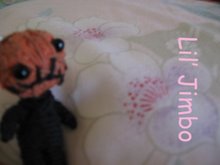
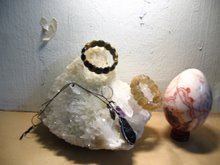
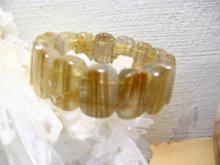

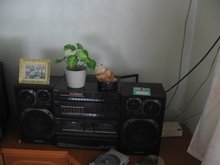

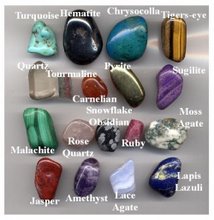
1 comment:
Holy Crap monkies that's a lot of info.
Post a Comment